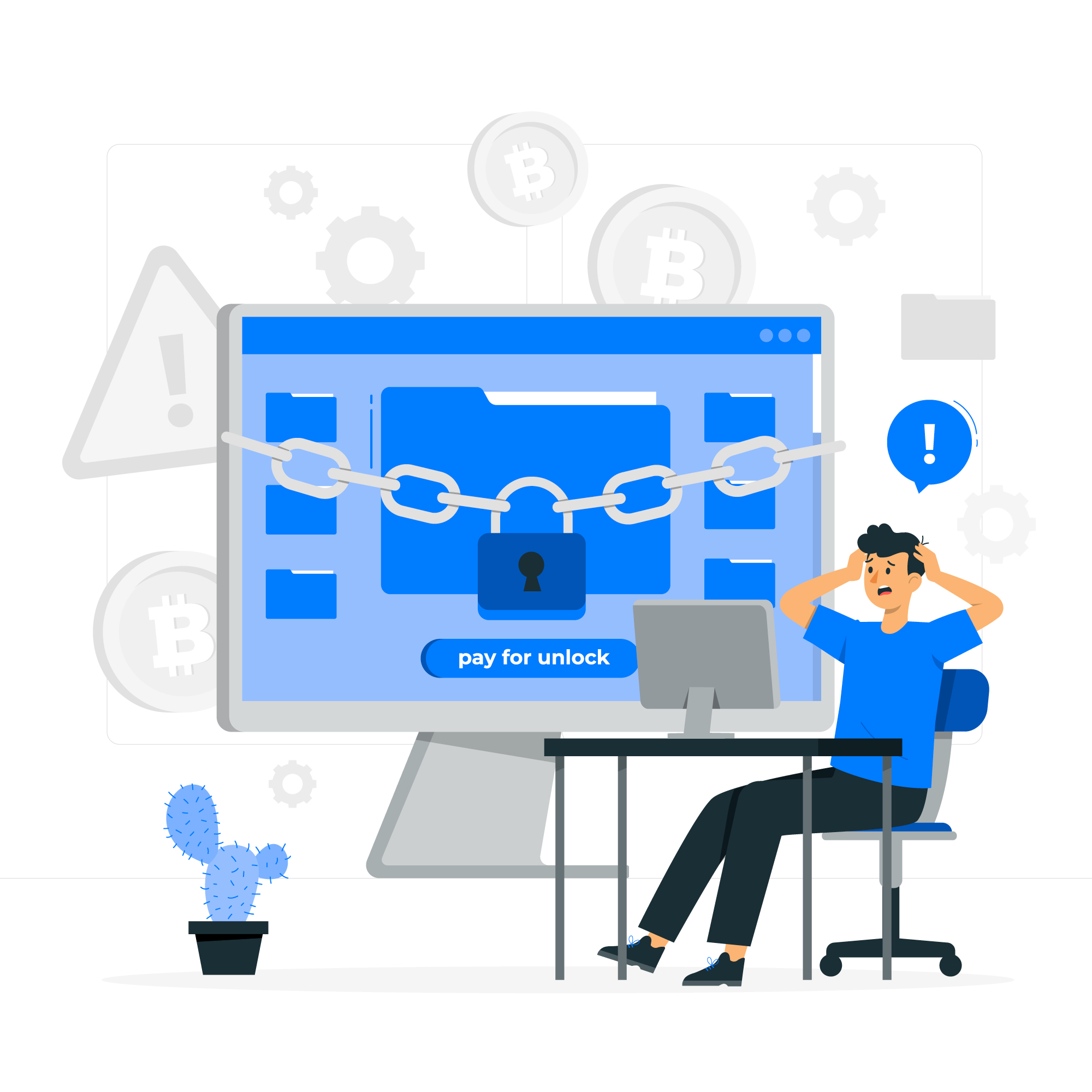 By: John Abhilash / August 12, 2024
By: John Abhilash / August 12, 2024
In today’s rapidly evolving digital landscape, organizations face an ever-increasing number of cyber threats. Two critical components of a robust cybersecurity strategy are vulnerability management and vulnerability assessment. While these terms are often used interchangeably, they represent distinct but complementary processes. This blog post will delve into the differences between vulnerability management vs vulnerability assessment, exploring their roles, benefits, and best practices.
Understanding Vulnerability Management and Vulnerability Assessment
Before we dive deeper into the comparison, let’s define these two important concepts:
Vulnerability Management: This is a comprehensive, ongoing process that involves identifying, evaluating, prioritizing, and addressing security vulnerabilities in an organization’s IT infrastructure. Vulnerability management encompasses the entire lifecycle of managing vulnerabilities, from discovery to resolution.
Vulnerability Assessment: This is a specific component of vulnerability management that focuses on identifying and analyzing vulnerabilities in systems, networks, and applications. Vulnerability assessment is typically a point-in-time activity that provides a snapshot of an organization’s security posture.
1.Scope and Duration
Vulnerability Management: Continuous and holistic Vulnerability Assessment: Periodic and focused
Vulnerability management is an ongoing process that involves continuous monitoring and improvement of an organization’s security posture. It encompasses the entire lifecycle of vulnerabilities, from identification to remediation and verification. On the other hand, vulnerability assessment is typically performed at specific intervals or after significant changes to the IT infrastructure.
2.Depth of Analysis
Vulnerability Management: Comprehensive analysis and prioritization Vulnerability Assessment: Initial identification and classification
While vulnerability assessment focuses on discovering and categorizing vulnerabilities, vulnerability management goes a step further by analyzing the potential impact of each vulnerability, prioritizing them based on risk, and developing remediation strategies.
3.Action and Remediation
Vulnerability Management: Includes remediation planning and execution Vulnerability Assessment: Primarily focused on detection and reporting
Vulnerability management involves creating and implementing action plans to address identified vulnerabilities. This may include patching, configuration changes, or other mitigation strategies. Vulnerability assessment, however, typically ends with a report of identified vulnerabilities, leaving the remediation planning to other teams or processes.
4.Stakeholder Involvement
Vulnerability Management: Involves multiple teams and departments Vulnerability Assessment: Often conducted by security teams or external auditors
Effective vulnerability management requires collaboration between various stakeholders, including IT, security, development, and business teams. Vulnerability assessment, while important, is often carried out by dedicated security professionals or third-party assessors.
5.Tools and Technologies
Vulnerability Management: Utilizes a wide range of tools and platforms Vulnerability Assessment: Focuses on scanning and detection tools
Vulnerability management platforms often integrate various tools for scanning, tracking, prioritizing, and remediating vulnerabilities. Vulnerability assessment tools are primarily focused on discovery and may include network scanners, web application scanners, and configuration analysis tools.
Detailed Technical Comparison: Vulnerability Management vs Vulnerability Assessment
To further illustrate the differences between vulnerability management and vulnerability assessment, let’s examine a detailed technical comparison of these two processes:
Aspect | Vulnerability Management | Vulnerability Assessment |
Definition | A comprehensive, ongoing process of identifying, evaluating, prioritizing, and addressing security vulnerabilities | A point-in-time activity focused on identifying and analyzing vulnerabilities in systems, networks, and applications |
Scope | Entire vulnerability lifecycle (discovery to resolution) | Primarily discovery and analysis |
Duration | Continuous, ongoing process | Periodic, typically scheduled or event-driven |
Depth of Analysis | In-depth analysis including risk assessment and prioritization | Initial identification and classification of vulnerabilities |
Action Orientation | Includes remediation planning and execution | Focuses on detection and reporting |
Stakeholder Involvement | Multiple teams (IT, Security, Development, Business) | Primarily security teams or external auditors |
Tools Used | Comprehensive platforms (e.g., Qualys VMDR, Tenable.io) | Specialized scanners (e.g., Nmap, OpenVAS) |
Key Activities | Asset discovery, vulnerability assessment, risk analysis, remediation planning, patch management, verification | Scanning, enumeration, version checking, configuration analysis |
Metrics | Risk scores, mean time to remediate (MTTR), patch compliance, vulnerability aging | Number of vulnerabilities, severity distribution, scan coverage |
Reporting | Trend analysis, risk posture, remediation progress | Vulnerability lists, technical details, severity ratings |
Integration | Integrates with SIEM, ticketing systems, patch management tools | May integrate with vulnerability management platforms |
Automation Level | High – automated scanning, prioritization, and workflow management | Medium – automated scanning, but often requires manual analysis |
Regulatory Compliance | Addresses ongoing compliance requirements (e.g., PCI DSS, HIPAA) | Provides point-in-time compliance snapshots |
Resource Intensity | High – requires ongoing dedication of resources | Moderate – intensive during assessment periods |
Output | Actionable remediation plans, risk reduction metrics | Vulnerability reports, risk assessments |
Skill Level Required | Broad range – from technical specialists to project managers | Technical specialists (security analysts, penetration testers) |
This comprehensive comparison underscores the complementary nature of vulnerability management and vulnerability assessment. While vulnerability assessment provides crucial insights into an organization’s security weaknesses, vulnerability management encompasses a broader, more continuous approach to addressing these vulnerabilities throughout their lifecycle.
Understanding these technical distinctions can help organizations better allocate resources, choose appropriate tools, and develop more effective strategies for maintaining a robust security posture. Whether you’re focusing on vulnerability assessment as part of a broader management strategy or implementing a full-scale vulnerability management program, this comparison can guide your approach and help you maximize the effectiveness of your cybersecurity efforts.
The Vulnerability Management Lifecycle
To better understand the relationship between vulnerability management and vulnerability assessment, let’s examine the typical vulnerability management lifecycle:
Asset Discovery and Inventory
Vulnerability Assessment
Risk Assessment and Prioritization
Remediation Planning
Remediation Execution
Verification and Reporting
Continuous Monitoring and Improvement
As we can see, vulnerability assessment is a crucial step within the broader vulnerability management process. It provides the foundation for effective risk management and security improvement.
Best Practices for Vulnerability Management and Vulnerability Assessment
To maximize the effectiveness of both vulnerability management and vulnerability assessment, consider the following best practices:
1.Establish a Regular Schedule
Conduct vulnerability assessments on a regular basis, such as monthly or quarterly, depending on your organization’s needs and risk profile. Integrate these assessments into your ongoing vulnerability management process to ensure continuous improvement.
2.Prioritize Based on Risk
Not all vulnerabilities are created equal. Use a risk-based approach to prioritize vulnerabilities based on factors such as potential impact, exploitability, and affected assets. This helps focus resources on the most critical issues.
3.Automate Where Possible
Leverage automation tools for both vulnerability assessment and management to improve efficiency and reduce the risk of human error. Automated scanners can help identify vulnerabilities quickly, while management platforms can streamline the remediation process.
4.Maintain an Up-to-date Asset Inventory
Keep a comprehensive and current inventory of all assets in your IT environment. This ensures that your vulnerability management and assessment efforts cover all potential attack surfaces.
5.Foster Cross-team Collaboration
Encourage communication and collaboration between security, IT, development, and business teams. This helps ensure that vulnerabilities are addressed efficiently and that security considerations are integrated into all aspects of the organization.
6.Implement Continuous Monitoring
While periodic vulnerability assessments are important, implement continuous monitoring tools to detect new vulnerabilities and changes in your environment in real-time.
7.Educate and Train Employees
Provide regular security awareness training to all employees, focusing on the importance of vulnerability management and their role in maintaining a secure environment.
8.Use Multiple Assessment Methods
Combine various assessment techniques, such as network scans, web application testing, and penetration testing, to gain a comprehensive view of your security posture.
9.Keep Tools and Databases Updated
Regularly update your vulnerability assessment tools and vulnerability databases to ensure you’re detecting the latest known vulnerabilities.
10.Document and Learn from the Process
Maintain detailed records of your vulnerability management and assessment activities. Use this information to identify trends, improve processes, and demonstrate compliance with regulatory requirements.
Choosing the Right Tools
Selecting appropriate tools is crucial for effective vulnerability management and assessment. Here are some popular options to consider:
Vulnerability Management Platforms:
Vulnerability Assessment Tools:
When choosing tools, consider factors such as ease of use, integration capabilities, reporting features, and scalability to ensure they meet your organization’s specific needs.
Conclusion
While vulnerability assessment and vulnerability management are distinct processes, they are both essential components of a comprehensive cybersecurity strategy. Vulnerability assessment provides the critical first step in identifying potential weaknesses, while vulnerability management ensures that these vulnerabilities are addressed effectively and continuously.
By understanding the differences between vulnerability management and vulnerability assessment, and implementing best practices for both, organizations can significantly improve their security posture and reduce the risk of successful cyber attacks. Remember that cybersecurity is an ongoing journey, and both vulnerability management and vulnerability assessment play crucial roles in navigating the ever-changing threat landscape.
As you develop your organization’s approach to vulnerability management and assessment, focus on creating a holistic, risk-based strategy that combines regular assessments with continuous monitoring and improvement. By doing so, you’ll be better equipped
Check Out Other Resources : Top vulnerability management techniques ,Vulnerability Management System-Guide







Leave a Comment